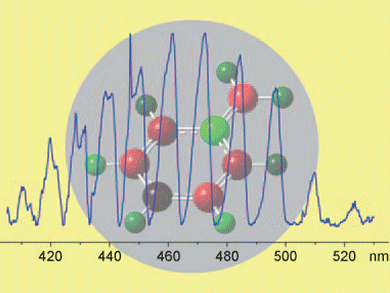The electronic spectroscopy of the two most stable C7H7+ species has now been studied in detail thanks to the efforts of John Maier and his team from the University of Basel, Switzerland. Electronic absorption spectra of benzylium (Bz+; see picture) and tropylium (Tr+) cations were recorded after mass-selected trapping of the cations into a neon matrix. Measurements in different regions of the spectra revealed both weak and strong transitions for Bz+ (C2v), along with the lowest dipole-allowed transition for Tr+ (D7h). Density functional calculations were performed to support interpretations of the ground-state energy and vibrational frequencies of Bz+ and Tr+.
Physical organic chemists have been debating the mass spectrometry and spectroscopic data with respect to the formation and automerization pathways of Bz+ and Tr+, for a long time. The spectroscopic information from this study should provide a reliable starting point for further gas-phase detection and investigation of benzylium and tropylium cations.
- On the Benzylium/Tropylium Ion Dichotomy: Electronic Absorption Spectra in Neon Matrices
A. Nagy, J. Fulara, I. Garkusha, J. P. Maier,
Angew. Chem. Int. Ed. 2011.
DOI: 10.1002/anie.201008036 - A. Nagy, J. Fulara, I. Garkusha, J. P. Maier,
Angew. Chem. 2011.
DOI: 10.1002/ange.201008036


Thanks for research work in progress and the publication as well, be encouraged.
I want to know more about the importance of tropyllium cation